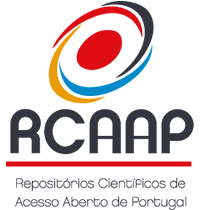Cyanobacteria and cyanotoxins in eutrophic reservoirs: exploring challenges for aquatic sustainability
DOI:
https://doi.org/10.48797/sl.2024.209Keywords:
PosterAbstract
Background: Globally, numerous eutrophic freshwater ecosystems exhibit an overgrowth of cyanobacteria, often coupled with the generation of cyanotoxins [1, 2], with a frequency increase due to climatic changes. These toxins encompass a diverse range of harmful metabolites with various repercussions on the ecosystem. They adversely affect the resilience and integrity of the food chain, contributing to water quality deterioration, oxygen depletion, and species lethality [3]. Additionally, these compounds may lead to the degradation of ecosystem services, particularly impacting recreational activities, agriculture, and the drinking water quality [4]. Objective: The present work aims to identify the effects of phytoplankton and cyanotoxins on the ecosystem health, and perceive the limitations of phytoplankton as the only biological element for classifying the water quality of reservoirs, specially eutrophic reservoirs. Methods: Water samples were collected in Aguieira reservoir since 2018. The phytoplankton community was analysed regarding the composition and abundance, as well as to investigate the potential for biotoxin production and its potential impacts on the water body quality. Results: The cyanobacteria group consistently appeared in all samples, predominantly within the most representative groups. Furthermore, organisms belonging to the genus Microcystis sp. were frequently detected in the samples, and these organisms produce toxins that can exert adverse effects on the ecosystem. Conclusions: The increasing prevalence of cyanobacteria and cyanotoxins in the environment raises concerns due to their impact on human and animal well-being and biodiversity. Furthermore, these harmful substances possess the ability to bioaccumulate, increasing their concentration in the food chain and presenting a potential threat to individuals who ingest contaminated organisms, such as fish. It is crucial to establish surveillance systems (such as early detection of the presence of cyanobacteria and cyanotoxins), as well as to promote information/sharing to the general public to effectively adopt preventive measures in the ecosystem.
References
1. Mantzouki, E.; Campbell, J.; Loon, E. Van; Visser, P.; Konstantinou, I.; Antoniou, M.; Giuliani, G.; Macha-do-Vieira, D.; Oliveira, A.G. De; Maronić, D.Š.; et al. A European Multi Lake Survey Dataset of Environmental Variables, Phytoplankton Pigments and Cyanotoxins. Sci Data (2018), 5, 180226.
2. Saqrane, S.; Ghazali, I. El; Ouahid, Y.; Hassni, M. El; Hadrami, I. El; Bouarab, L.; del Campo, F.F.; Oudra, B.; Vasconcelos, V. Phytotoxic Effects of Cyanobacteria Extract on the Aquatic Plant Lemna Gibba: Microcystin Accumulation, Detoxication and Oxidative Stress Induction. Aquat Toxicol (2007), 83, 284–294.
3. Schindler, D.W.; Vallentyne, J.R. The Algal Bowl: Overfertilization of the World’s Freshwaters and Estuaries; The University of Alberta Press, Earthscan, 2008.
4. Vasconcelos, V.; Morais, J.; Vale, M. Microcystins and Cyanobacteria Trends in a 14 Year Monitoring of a Temperate Eutrophic Reservoir (Aguieira, Portugal). J Environ Monit (2011), 13, 668–672
Downloads
Published
How to Cite
Issue
Section
License
Copyright (c) 2024 Ivo Pinto, Luísa Azevedo, Sara C. Antunes

This work is licensed under a Creative Commons Attribution 4.0 International License.
In Scientific Letters, articles are published under a CC-BY license (Creative Commons Attribution 4.0 International License), the most open license available. The users can share (copy and redistribute the material in any medium or format) and adapt (remix, transform, and build upon the material for any purpose, even commercially), as long as they give appropriate credit, provide a link to the license, and indicate if changes were made (read the full text of the license terms and conditions of use).
The author is the owner of the copyright.









